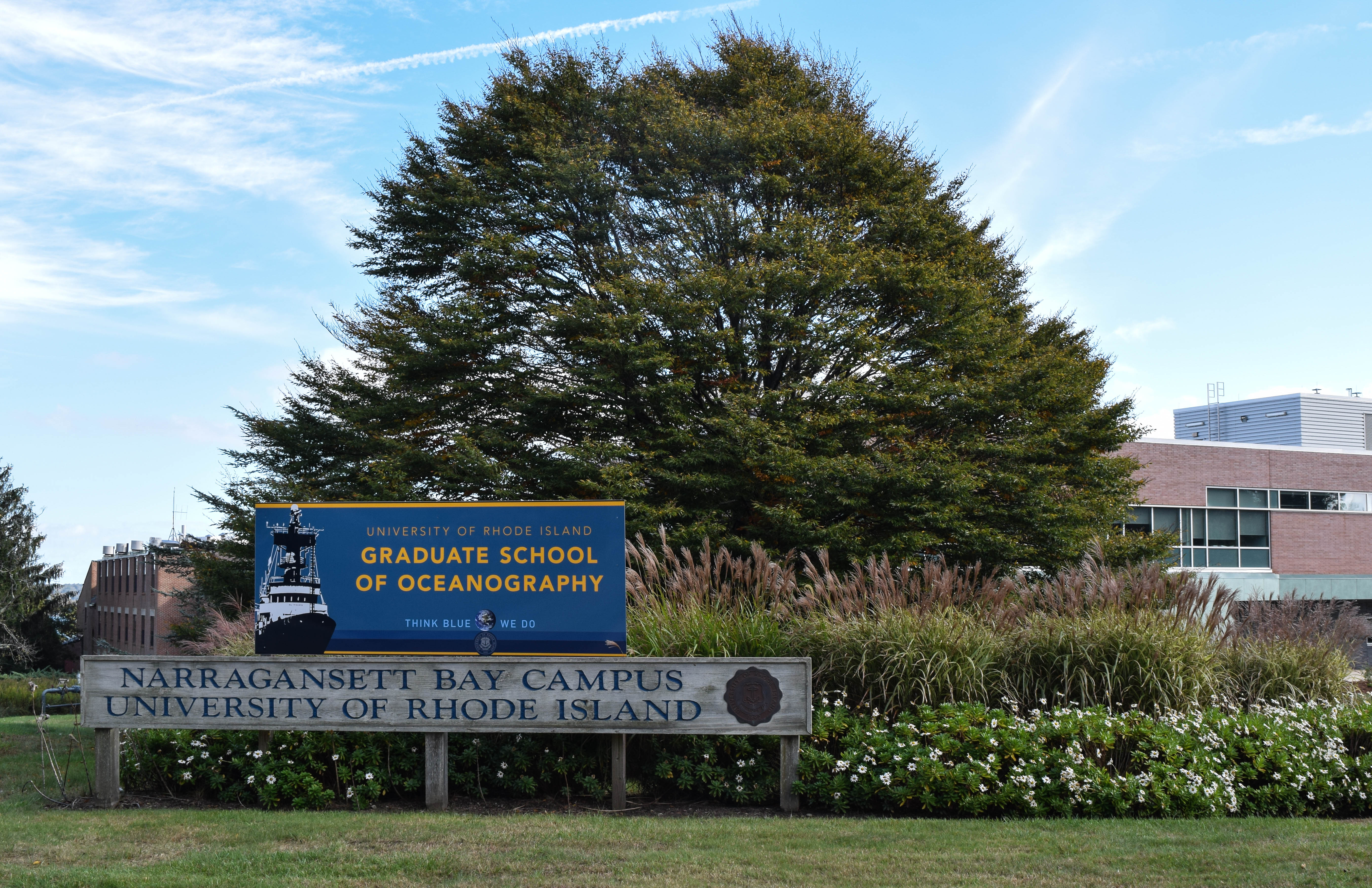The Graduate School of Oceanography was given a $1 million donation by the president of ExxonMobil Exploration Company to fund a new building. Photo by Anna Meassick.
The University of Rhode Island’s Graduate School of Oceanography (GSO) has received a $1 million donation which will go towards funding a new building.
Stephen Greenlee, the current president of the ExxonMobil Exploration Company,
The Greenlee Family GSO Redevelopment Fund helps bolster the funds of the Bay Campus Master Plan, specifically focusing on the creation of a new building for the Horn Laboratory on the Narragansett Bay Campus. The Narragansett Bay Campus Master Plan lays out improvements that the University intends to make to the campus.
The new lab will be built just south of the current one, and is designed to be an enhanced learning area for researchers and students. Ellenzweig, an architecture firm out of Boston, known for designing notable buildings on campuses such as Harvard and the Woods Hole Oceanographic Institute, was hired by URI to estimate expenses. It was concluded that the new 50,000-square-foot facility will cost an expected $13.5 million, the same as if the existing lab was to be renovated.
“[The current] Horn Lab will stay up until the new building is constructed, allowing for a nice transition,” Corliss said.
The Horn Lab was built in the 1960s. “Architects felt that it was too expensive to renew the building, and it would be better to start over,” said GSO Dean Dr. Bruce Corliss.
Many of the resources located in the lab are outdated, and according to the Bay Campus Master Plan, there are numerous safety hazards that the building faces.
These hazards include the roof not being “water tight,” with reports of “hazardous materials throughout the building” and “no sprinkler system.”
Accessibility is also an issue, as “the facility predates the Americans with Disabilities Act (ADA) and any compliance with the requirements of the legislation is purely coincidental.”
Based on the assessments from architecture firm Ellenzweig, it was determined that it would be logical to create a new, state-of-the-art facility rather than attempting to remodel the current building within the constraints of its current footprint.
There are also many other new projects that will begin to take place on the Bay Campus very shortly. Most notably is the addition of a new research vessel, R/V Resolution, which is expected to arrive in 2021. A new dock is being constructed to support the vessel, as well as combat the rise in sea level that is expected.
Construction of the new dock is expected to begin soon, as it needs to be completed before the R/V Resolution in 2021. Construction on the other facilities is expected to happen shortly after that project is completed.
“[We] expect they would be breaking ground on the buildings in early 2021, right around the corner,” Corliss said.
Corliss also said that it’s not just technology and new construction that makes it so noteworthy, but its staff and students.
“It is the quality of the people, the quality of the students, that have made a difference in terms of the research we carry out,” Corliss said.

